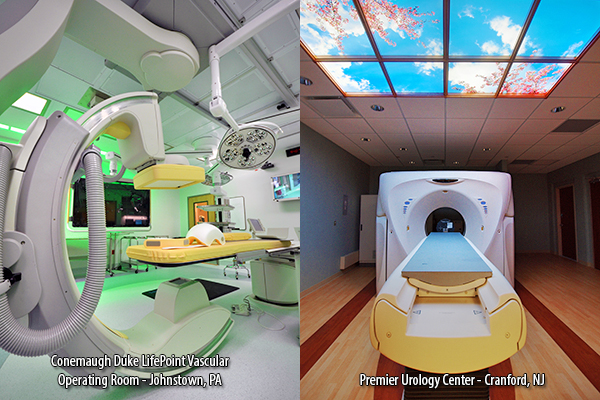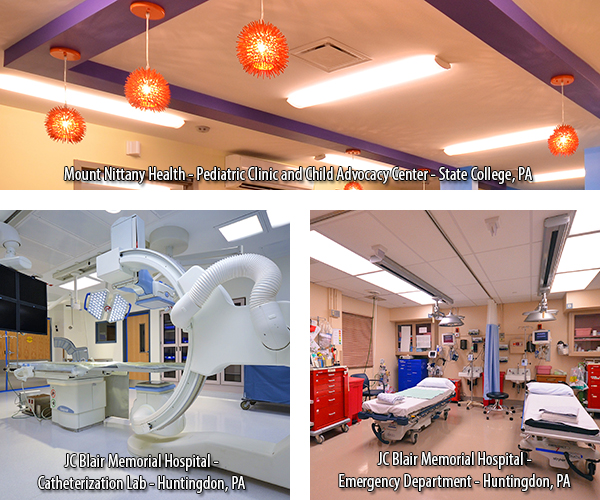Ensuring Additions, Renovations and Repairs Comply with the Latest Code
Codes are constantly updated to reflect the best and safest practices

Long-term healthcare facility planning poses significant challenges, particularly given the rapid pace of change in the healthcare industry. While forecasting for tomorrow’s needs is difficult enough, these organizations are also challenged with ensuring any renovations or updates are made in compliance with the appropriate version of the code. When these renovations impact dated sections of older facilities, healthcare building (or facility) compliance can become especially difficult.
The codes are constantly updated to reflect the best and safest practices, so it is critical to ensure any type of change follows the correct code. These updates, however, can challenge facility managers who must ensure they not only reference the appropriate code, but also broadly view any changes accountable for how an update may impact related systems.
Flexibility for Repairs and Renovations
While in the past, facility managers had to make any updates in compliance with the newest version of the code, NFPA has provided a small bit of leniency. In a new chapter on Building Rehabilitation, NFPA 101 defines updates as “major” or “minor,” providing some variation in whether facility updates must comply with new code requirements. Certain repairs or renovations to existing healthcare facilities, as defined by Chapter 43, can be performed to meet the code that was met during initial construction.
Minor repairs, for example, might include touching up chipped paint on doors or replacing ceiling tiles damaged by a water leak. If the work is done with similar materials and does not reduce the level of code compliance, it is acceptable to maintain compliance with existing code requirements.

A renovation, on the other hand, includes strengthening or upgrading building elements, materials, equipment or fixtures, but does not result in a reconfiguration of the building spaces. An example of this type of renovation would be wallpapering an existing corridor wall for the first time. This work can also be done to meet existing code requirements, however, any new finishes must still meet new requirements. None of these changes can reduce the level of code compliance.
While NFPA does provide helpful examples to demonstrate the nature of repairs versus renovations, it is inevitable that additional unmentioned examples will lead to confusion. In these instances, it’s important to consider the intent of the code and the action taken to ensure the appropriate level of compliance is met.
Making Tough Choices in Meeting New Codes
Although this new chapter provides some leniency, CMS and NFPA took a tough stance in other areas and now require across-the-board updates to some critical systems. For example, many facilities right now are being challenged to find ways to perform ductwork damper testing even in inaccessible areas.
In the past, CMS and surveyors such as The Joint Commission made allowances for certain locations that were inaccessible, stating it would not be reasonable to expect facility managers to perform a damper test in those areas. However, when CMS adopted the 2012 edition of NFPA 101, it included a blanket requirement that all dampers must be accessible, tested and documented during the mandated tests performed every six years.

Today, there are thousands of facilities across the country with multiple locations of inaccessible dampers that now have to be made accessible. As with any code change, this more stringent requirement is intended to provide an increase in safety to all building occupants. If a fire occurs and the damper does not close, smoke could be pulled through the ductwork and affect the other areas of the hospital. For this reason, the tough stance by CMS on the need for accessible and tested dampers is understandable. However, what is less clear is the actual solution for how to comply with this updated requirement.
The solution to this particular challenge will vary for each building. As a result, facility managers are best served by working closely with knowledgeable design professionals, subcontractors or other consultants who can make recommendations that meet compliance with all applicable codes without sacrificing any of the facilities’ needs.
The Importance of Code Compliance for Outside Contractors
Code updates, however challenging, aren’t as frequent as the seemingly uncomplicated repairs that can potentially lead to serious deficiencies. When subcontractors or outsourced maintenance contractors are brought in to provide a one-time solution without a broad understanding of how their actions are impacting interrelated systems, facilities risk failing code compliance.
For example, HVAC balancing contractors can inadvertently impact the pressures of environmental rooms, such as airborne infection isolation rooms, clean holding areas and corridors. If these contractors don’t understand the sensitive needs of healthcare facilities and the importance of ensuring the appropriate amount of air exchanges to contain infection, they may not act with the vigilance necessary to meet the codes governing room air pressure relationships.
Healthcare facilities are far more complex than standard commercial buildings because failure of even the simplest systems can have life or death implications. As a result, it is helpful to work with professionals who have specific expertise in healthcare systems. These experts should understand that adjustments made to one system might impact other critical areas or violate one of the many codes governing the facility’s operation.
Creating a Scope of Work for Improvement
Code compliance can be particularly challenging for renovations to older areas of a hospital or medical building. Often, it can be cost-prohibitive for these facilities to bring older mechanical and electrical systems into compliance with the current code requirements. Determining the necessary scope of work often requires professional discretion along with the owner’s input.
By having a broad perspective on change and considering facility planning in terms of code compliance, facility managers can make improvement decisions that will put patient safety needs first.
Like what you just read? This blog post is the fourth chapter from our Executive Guide on facility compliance. Click here to view or download to entire version of JPT"s Executive Guide - The Complexity of Healthcare Facility Compliance.